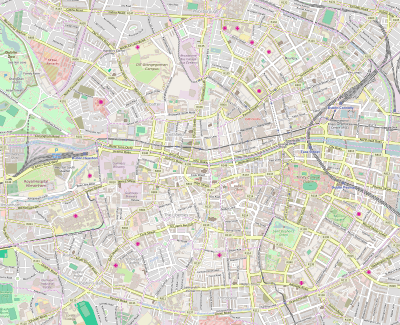Fitzwilliam Square
Fitzwilliam Square (Irish: Cearnóg Mhic Liam) is a Georgian garden square in the south of central Dublin, Ireland. It was the last of the five Georgian squares in Dublin to be built, and is the smallest.[1]
 Fitzwilliam Square West | |
 | |
| Native name | Cearnóg Mhic Liam (Irish) |
|---|---|
| Namesake | Richard FitzWilliam, 7th Viscount FitzWilliam |
| Area | 1.5 hectares (3.7 acres) |
| Location | Dublin, Ireland |
| Postal code | D02 |
| Coordinates | 53.3354°N 6.2520°W |
| Other | |
| Website | www |
The square was developed by Richard FitzWilliam, 7th Viscount FitzWilliam, hence the name. It was designed from 1789 and laid out in 1792. The center of the square was enclosed in 1813 through an Act of the Parliament of Ireland. To the north is the much larger Merrion Square, with which Richard FitzWilliam was also involved. The square was a popular place for the Irish Social Season of aristocrats entertaining in Dublin between January and Saint Patrick's Day each year.[2]
Shootings took place in the square during Bloody Sunday of 1920. Sir Thomas O'Shaughnessy (1850–1933), the last Recorder of Dublin, lived in Fitzwilliam Square and died there on 7 March 1933.[3]
References
- "Fitzwilliam Square | Dublin, Ireland Attractions". Lonely Planet.
- Hughes, Andrew (March 14, 2011). "Lives Less Ordinary: Dublin's Fitzwilliam Square, 1798-1922". Liffey Press – via Google Books.
- "Home - No. 25 Fitzwilliam Place". No. 25 Fitzwilliam Place.
External links
- Irish architecture information (including photographs of doorways)
- DublinTourist.com information
| Wikimedia Commons has media related to Fitzwilliam Square, Dublin. |